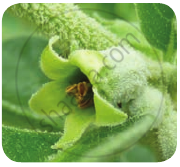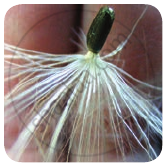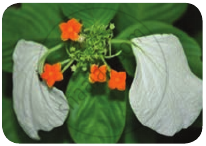Topics
Sexual Reproduction in Flowering Plants
- Flower - a Fascinating Organ of Angiosperms
- Parts of Flower
- Accessory Organs
- Essential Parts of Flower: Androecium
- Essential Parts of Flower: Gynoecium
- Sexual Reproduction in Flowering Plants
- Pre-fertilisation in Flowering Plant: Structures and Events
- Development of Anther
- Transverse Section of Mature Anther (Microsporangium)
- Microsporogenesis
- Microspores and Pollen Grains
- Development of Male Gametophyte
- Advantages and Disadvantages of Pollen Grains
- Structure of Ovule (Megasporangium)
- Types of Ovules
- Megasporogenesis
- Development of Female Gametophyte or Embryo Sac
- Pollination
- Outbreeding Devices
- Artificial Hybridization
- Kinds of Pollination
- Self Pollination (Autogamy)
- Cross Pollination
- Agents of Pollination
- Abiotic Agents
- Biotic Agents
- Fertilization Process
- Fertilization Process
- Post Fertilisation in Plant: Structures and Events
- Development of Endosperm
- Post Fertilization in Plant: Development of Embryo (Embryogeny)
- Development of Seed
- Development of Fruit
- Apomixis
- Polyembryony
Reproduction in Organisms
- Life Span of Organisms
- Maximum Life Span of Organisms
- Reproduction in Organisms
- Types of Reproduction
- Asexual Reproduction
- Sexual Reproduction in Animals
- Asexual Reproduction in Plant
- Asexual Reproduction in Animal
- Budding
- Vegetative Reproduction
- Natural Vegetative Reproduction
- Artificial Vegetative Reproduction
- Artificial Vegetative Reproduction
- Artificial Vegetative Reproduction
- Fission
- Budding
- Sporulation (Sporogenesis)
- Fragmentation
- Different Phases in Sexual Reproduction
- Sexual Reproduction in Animals
- Pre-fertilisation Events in Organisms
- Fertilisation in Organisms
- Post-fertilisation Events in Organisms
Reproduction
Genetics and Evolution
Human Reproduction
Reproductive Health
Biology and Human Welfare
Environmental Issues
- Environmental Issues
- Prevention of Air Pollution
- Controlling Vehicular Air Pollution: a Case Study of Delhi
- Introduction of Water Pollution and Its Control
- Effects of Domestic Sewage and Industrial Effluents on Water
- A Case Study of Integrated Waste Water Treatment
- Solid Wastes
- Agrochemicals and Their Effects
- Radioactive Wastes
- Greenhouse Effect and Climate Change
- Ozone Depletion in the Stratosphere
- Degradation by Improper Resource Utilisation and Maintenance
- Deforestation and Its Causes
- Radioactive Waste Management and E-waste
- Solid Waste Management
- Noise Pollution
- Environmental Issues
Biotechnology
Principles of Inheritance and Variation
- Introduction of Principles of Inheritance and Variation
- Mendelism
- Terminology Related to Mendelism
- Mendel’s experiments on pea plant
- Monohybrid Cross
- Gregor Johann Mendel – Father of Genetics
- Punnett Square
- Back Cross and Test Cross
- Mendelian Inheritance - Mendel’s Law of Heredity
- The Law of Dominance
- The Law of Segregation (Law of Purity of Gametes)
- The Law of Independent Assortment
- Intragenic Interactions - Incomplete Dominance
- Intragenic Interactions - Codominance
- Gregor Johann Mendel – Father of Genetics
- Extensions of Mendelian Genetics (Deviation from Mendelism)
- Intragenic Interactions - Incomplete Dominance
- Intragenic Interactions - Dominance
- Intragenic Interactions - Codominance
- Multiple Alleles
- Intragenic Interactions - Pleiotropy
- Polygenic Inheritance
- Chromosomal Theory of Inheritance
- Historical Development of Chromosome Theory
- Comparison Between Gene and Chromosome Behaviour
- Chromosomal Theory of Inheritance: Law of Segregation
- Chromosomal Theory of Inheritance: Law of Independent Assortment
- Linkage and Recombination
- Sex Determination
- Sex Determination in Some Insects
- Sex Determination in Human
- Sex Determination in Birds
- Sex Determination in Honey Bees
- Concept of Mutation
- Pedigree Analysis
- Genetic Disorders
- Mendelian Genetics
- Chromosomal Abnormalities
- Heredity and Variation
- Linkage and Crossing Over
- Principles of Inheritance and Variation Question
Molecular Basis of Inheritance
- Introduction of Molecular Basis of Inheritance
- Deoxyribonucleic Acid (DNA) and Its Structure
- Structure of Polynucleotide Chain
- Packaging of DNA Helix
- Search for Genetic Material
- Introduction of Search for Genetic Material
- The Genetic Material is a DNA
- Properties of Genetic Material (DNA Versus RNA)
- The RNA World
- DNA Replication
- The Experimental Proof
- The Machinery and the Enzymes
- Protein Synthesis
- Introduction of Transcription
- Transcription Unit
- Transcription Unit and the Gene
- Types of RNA and the Process of Transcription
- Genetic Code
- Genetic Code
- Genetic Code
- tRNA – the Adapter Molecule
- Translation
- Regulation of Gene Expression
- Operon Concept
- Human Genome Project
- DNA Fingerprinting Technique
- Structure of DNA and RNA
- Structure of Nucleotide
- Rice Genome Project
- Molecular Basis of Inheritance (Questions)
Ecology
Evolution
- Origin and Evolution of Universe and Earth
- Theories of Origin of Life
- Evolution of Life Forms - a Theory
- Evidences for Biological Evolution
- Theories of Biological Evolution
- Adaptive Radiation
- Organic Evolution
- Hardy Weinberg’s Principle
- Brief Account of Evolution
- Human Evolution
- Darwinism
- Micro and Macro Evolution
- Speciation
- Evolution Stages
- Modern Synthetic Theory of Evolution
- Gene Flow and Genetic Drift
- Evolution
Human Health and Diseases
- Introduction of Human Health and Diseases
- Common Diseases in Human Beings
- Immunity
- Types of Immunity
- Vaccination and Immunization
- Allergies (Hypersensitivity)
- Autoimmunity
- Human Immune System
- Sexually Transmitted Diseases (STD)
- Cancer
- Introduction of Drugs and Alcohol Abuse
- Drugs and Alcohol Abuse
- Adolescence - Drug and Alcohol Abuse
- Addiction and Dependence
- Effects of Drug and Alcohol
- Prevention and Control of Drugs and Alcohol Abuse
- Infectious and Non Infectious Disease
- Maintaining Good Health, Yoga, Excercise
- Human Health and Diseases (Questions)
Strategies for Enhancement in Food Production
Microbes in Human Welfare
- Microbes in Human Welfare
- Microbes in Household Products
- Microbes in Industrial Production
- Microbes in Sewage Treatment
- Microbes in Production of Biogas
- Microbes as Biocontrol Agents
- Microbes as Biofertilizers
- Energy Generation
- Production and Judicious Use
- Microbes in Human Welfare
Biotechnology - Principles and Processes
- Process and Principles of Biotechnology
- Restriction Enzymes
- Cloning Vectors
- Competent Host (For Transformation with Recombinant DNA)
- Processes of Recombinant DNA Technology
Biotechnology and Its Application
Organisms and Populations
- Introduction of Organisms and Populations
- Ecology (Organism, Population, Community and Biome)
- Introduction of Organisms and Environment
- Major Abiotic Factors
- Responses to Abiotic Factors
- Population Attributes
- Population Growth
- Life History Variation
- Population Interactions
- Population and Ecological Adaptations
- Organisms and Populations (Questions)
Ecosystem
- Ecosystem
- Introduction and Types of Ecosystem
- Ecosystem - Structure and Function
- Productivity
- Decomposition
- Concept of Energy Flow in an Ecosystem
- Ecological Pyramids
- Ecological Succession
- Nutrient Cycles
- Ecosystem Services
- Ecosystems Patterns
Biodiversity and Its Conservation
- Biodiversity
- Species on Earth and Species in India
- Patterns of Biodiversity
- Importance of Species Diversity to the Ecosystem
- Loss of Biodiversity
- Conservation of Biodiversity
- Endangered Organisms
- Importance of Biodiversity
- Extinction
- Red Data Book
- Biodiversity and Its Conservation (Questions)
- Accessory organs
- Arrangement of whorls
- Calyx
- Corolla
- Perianth
- Aestivation
Notes
Accessory organs:
1) Arrangement of whorls:
The position of perianth (sepals, petals, tepals) parts relative to one another is called perianth arrangement.
- Cyclic or whorled: All the floral parts are arranged in definite whorls. Example: Brassica.
- Acyclic or spiral: The floral parts are arranged in spirals on the elongated fleshy torus. Example: Magnolia.
- Spirocyclic or hemicyclic: Some parts are in whorls and others parts are in spirals. Example: Annona, Polyalthia.
2) Calyx:
Calyx protects the flower in bud stage. Outermost whorl of flower is calyx. Unit of the calyx is sepal. Normally green in colour.
- Fusion:
a) Aposepalous (polysepalous): The flower with distinct sepals. Example: Brassica, Annona.
b) Synsepalous: The flower with united or fused sepals. Example: Hibiscus. - Duration of floral parts:
a) Caducous or fugacious calyx: Calyx that withers or falls off during the early development stage of flower. Example: Papaver.
b) Deciduous: Calyx that falls soon after the opening of flower (anthesis) Example: Nelumbo.
Caducous bud with sepal
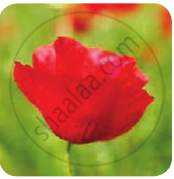
Caducous flower without sepal
c) Persistant: Calyx that persists and continues to be along with the fruit and forms a cup at the base of the fruit. Example: Brinjal.
Deciduous
d) Accrescent: Calyx that is persistent, grows along with the fruit and encloses the fruit either completely or partially. Example: Physalis.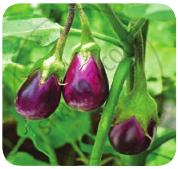
Persistant calyx

Accrescent
- Shapes of calyx:
- The bell-shaped calyx is called Campanulate.
- The fruiting calyx is urn-shaped in Withania and it is called urceolate.
- In Datura calyx is tube-like and it is known as tubular. the two-lipped calyx is present in Ocimum.
- Sometimes calyx is coloured and called petaloid. Example: Saraca and Mussanda.
- In Tridax, the calyx is modified into hair-like structures called pappus.
|
Companulate |
Pappus |
Mussaenda |
3) Corolla:
Corolla is the most attractive part in majority of the flowers and is usually brightly coloured. Corolla helps to display the flower and attracts pollinators.
1) Fusion:
- Apopetalous (polypetalous): Petals are distinct. Example: Hibiscus.
- Sympetalous (gamopetalous): Petals are fused. Example: Datura.
4) Perianth:
- Undifferentiated calyx and corolla in a flower are called perianth.
- Each member is called a tepal.
- If the tepals are distinct they are called Apotepalous (Polyphyllous). Example: Allium sativum.
- Fused tepals are called Syntepalous (Gamophyllous). Example: Allium cepa.
- Lodicule: Reduced scale-like perianth in the members of Poaceae is called lodicule.
5) Aestivation:
The arrangement of sepals and petals in the flower bud is said to be aestivation.
|
i. Valvate |
ii. Twisted |
iii. Imbricate |
iv. Quincuncial |
v. Vexillary |
| Aestivation | ||||
- Valvate: Margins of sepals or petals do not overlap but just touch each other. Example: Calyx in members of Malvaceae, Calotropis, Annona.
- Twisted or Convolute or Contorted: One margin of each petal or sepal overlapping on the other petal. Example: Petals of China rose.
- Imbricate: Sepals and petals irregularly overlap on each other; one member of the whorl is exterior, one interior and the rest of the three having one margin exterior and other interior. Example: Cassia, Delonix.
There are 3 types: 1. Ascendingly imbricate; 2. Quincuncial; 3. Vexillary. - Vexillary: Large posterior petals both margins overlap lateral petals. Lateral petals other margin overlaps anterior petals. Example: Pea, Bean.
- Quincuncial: It is a type of imbricate aestivation in which two petals are external and two internal and one petal with one margin internal and the other margin external. Example: Guava, Calyx of Ipomoea, Catharanthus.
If you would like to contribute notes or other learning material, please submit them using the button below.
